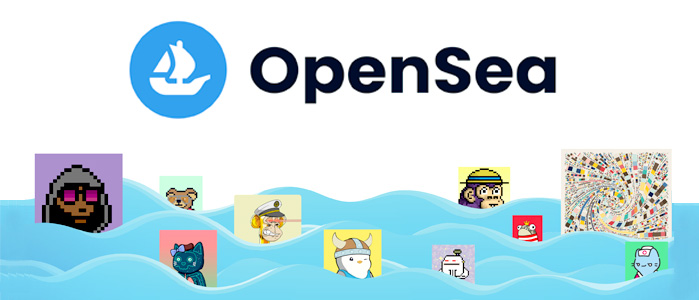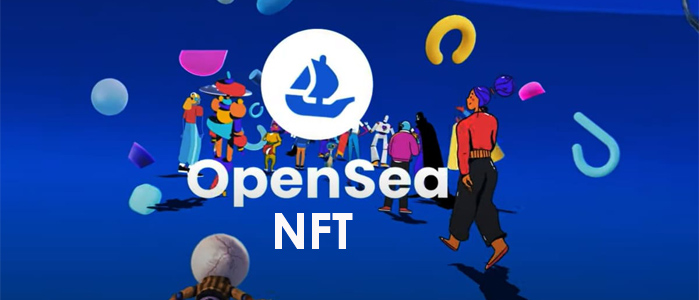If you are planning to create and sell NFT or buy any digital assets, OpenSea and Rarible are two popular marketplaces that you would likely check. Interestingly, while both platforms have some similarities, they are also different in a lot of ways.
For a start, OpenSea is a bigger marketplace that supports over 150 tokens. It was established well before the launch of Rarible. Also, it supports several crypto wallets and offers cross-blockchain support for different platforms, including Polygon, Klatyn, and Ethereum.
Rarible, on the other hand, offers only three blockchain options, including Ethereum, Flow, and Tezos. It is open to both creators and buyers. However, it is a much better platform for creators because it offers up to 50% royalties, while OpenSea only offers 10%.
In this post, we will highlight the major differences between the two so that you can make informed decisions when choosing a platform to transact your NFTs and other digital assets.


OpenSea: Is the Marketplace Right for You?
OpenSea was established in 2017 and it offers a platform where people can create or mint NFTs to sell. Buyers can buy directly from creators and resell them on the platform. The marketplace supports several blockchains and offers over 150 tokens.
You will find different types of NFTs on the platform, including art, collectibles, trading cards, domain names, photography, music, utility, sports, and virtual worlds. OpenSea offers a special minting process and creators can list their digital assets on the marketplace without any upfront gas fee payment.
This aims to help creators to save money because they don’t have to pay any fee until they sell their art. The marketplace offers royalties to creators, which means if someone buys an NFT and decides to resell it, the original creator will earn a 10% royalty on the sale.
Pros and Cons of OpenSea
Pros:
- OpenSea does not require that NFT creators pay gas fees until they sell their products
- Availability of numerous blockchains and a wide range of NFT products and collectibles
- Opportunity for secondary sale with the original creators earning up to 10% royalties on the sale.
- Hundreds of payment methods, including cryptocurrencies
Cons:
- Low royalty percentage compare to Rarible offers up to 50%
- Customer support is not fantastic
- Absence of a decentralized governance system
- Security issues can open users to cyber attacks


Rarible: Is the Marketplace the Right for You?
Rarible is a relatively new platform. It was launched in 2020 and like OpenSea and it provides a platform where NFT creators and buyers can meet. The marketplace offers art, metaverses, games, photography, memes, decentralized finance, and music domains.
It supports three blockchains, which are Ethereum, Flow, and Tezos. One big downside to Rarible is the unfavorable minting process. Before you can sell, you first have to mint your NFTs. That means you are responsible for the upfront minting fees, regardless of whether you sell your NFT or not.
However, creators can earn up to 50% royalties when someone resells their NFTs in the secondary market. This is higher than what OpenSea offers at 10%. It is worth mentioning that Rarible also supports many crypto wallets, which include MetaMask, Fortmatic, Coinbase, Portis, and Rainbow, among others.


Pros and Cons of Rarible
Pros:
- Rarible has a simple interface where users can view different NFTs and filter them by blockchain and category.
- It offers many community-driven features designed to simplify the interactions within the marketplace.
- Creating and minting NFT is simple and fast on the platform.
- NFT creators earn high royalties on their creations that can be as high as 50%.
- Features DAO-enabled governance system that treats all users as stakeholders.
Cons:
- The transaction fee at 2.5% is on the high side compared to some other platforms.
- It is also vulnerable to cyber-attacks because it is also an open market.
Final Thoughts
While both platforms have a lot in common, the major difference is how each integrates users into its marketplace. Rarible is designed to put the control of the marketplace into the hands of users. The platform uses a democratic approach in governing and managing its platform and infrastructure.
OpenSea, on the other hand, puts the control and management of its platform in the hands of a few. It is a decentralized but traditional marketplace with a multi-chain and broad scope approach that sets antecedence for upcoming NFTs.
Overall, OpenSea is more beneficial to buyers looking for diverse investment opportunities and creators looking to save on minting costs. Rarible is suited for NFT creators looking to earn more from secondary sales and royalties.


